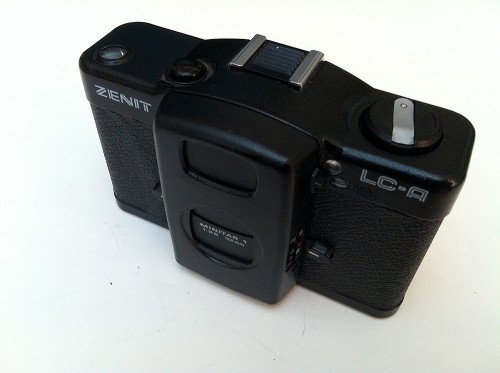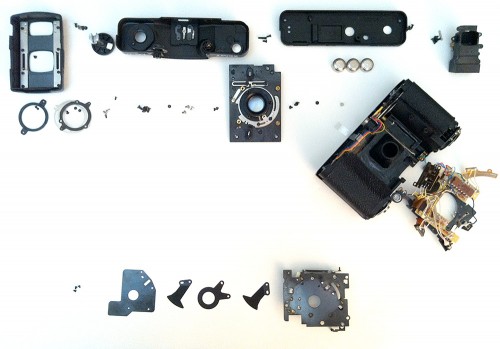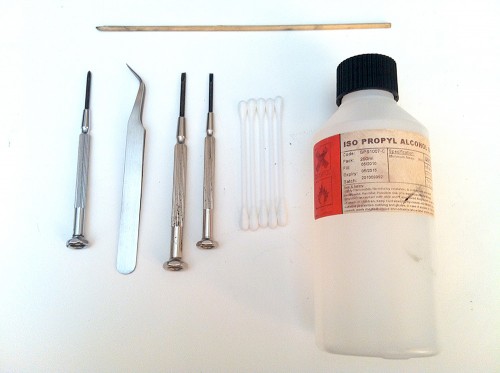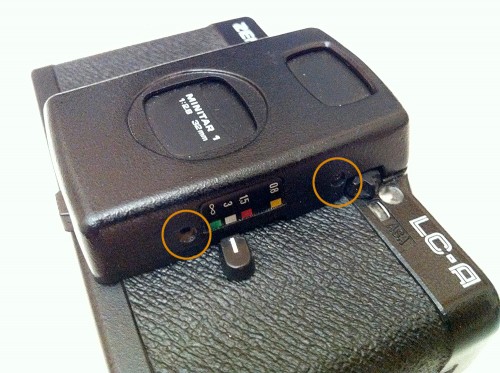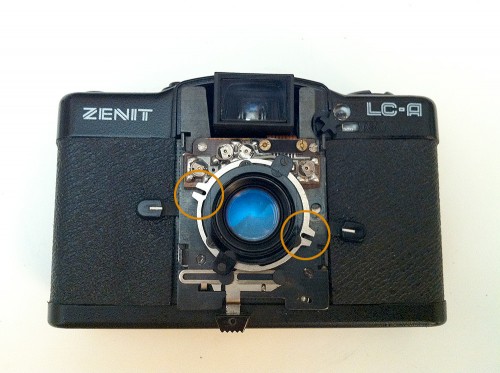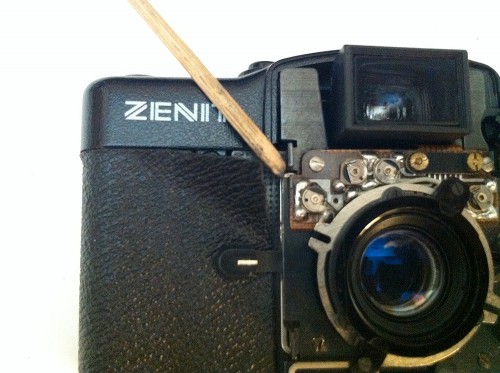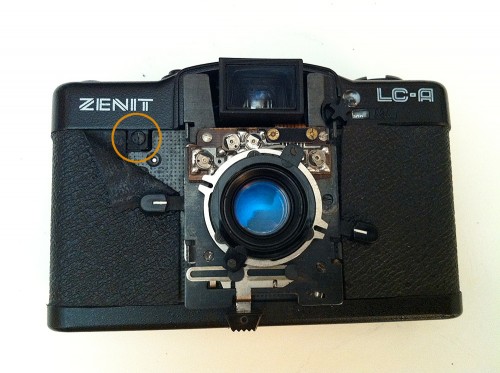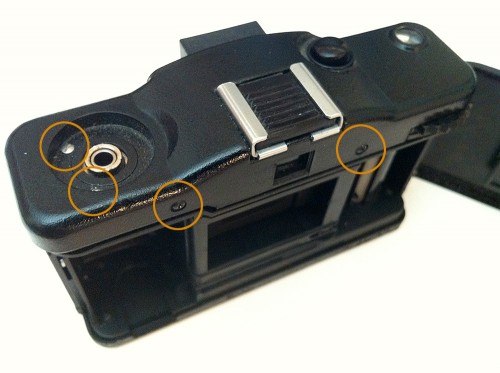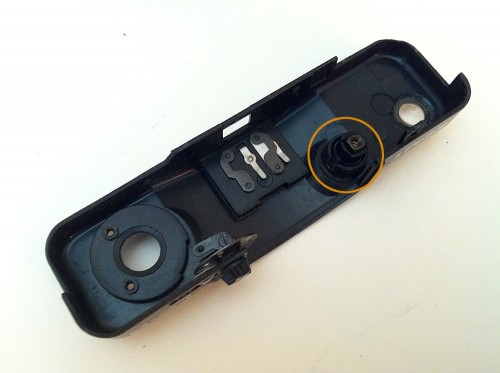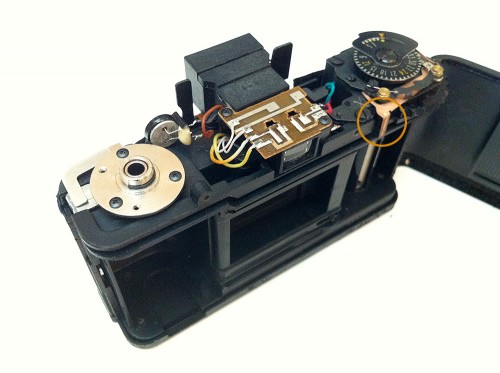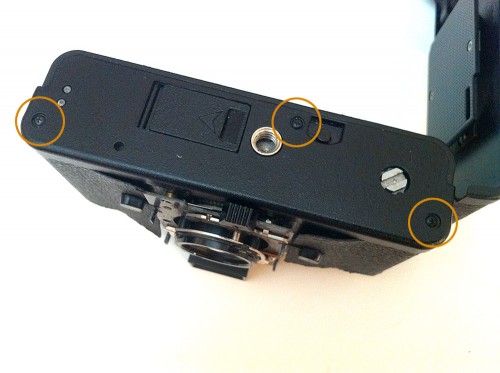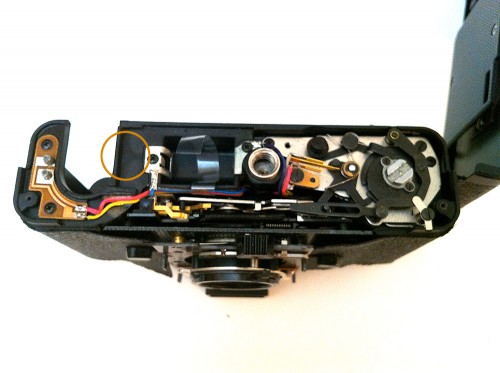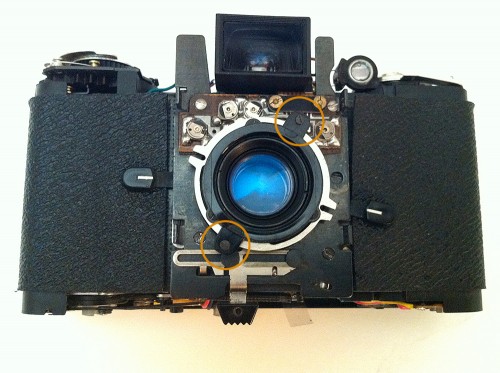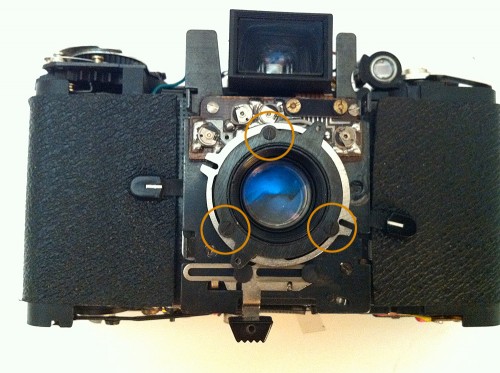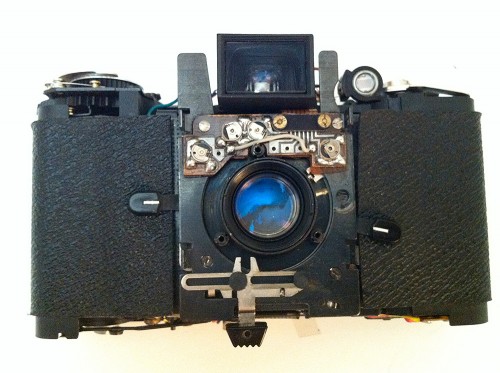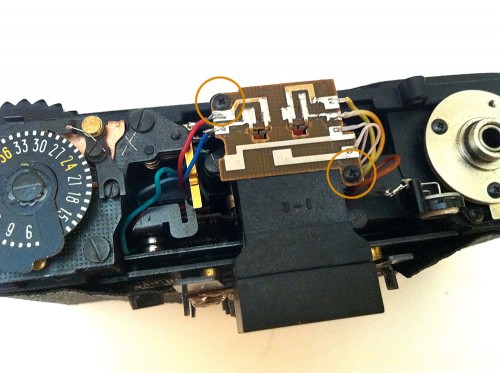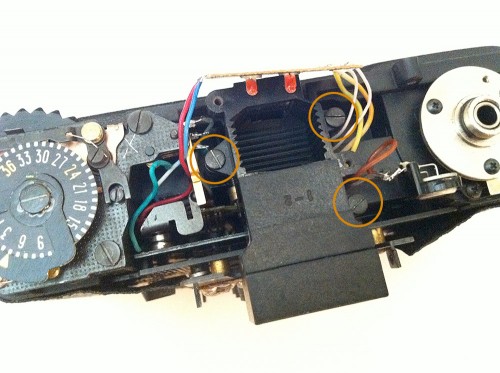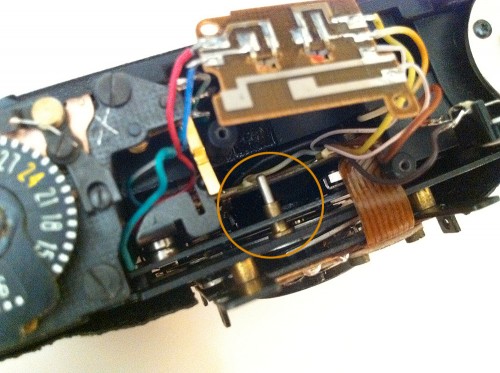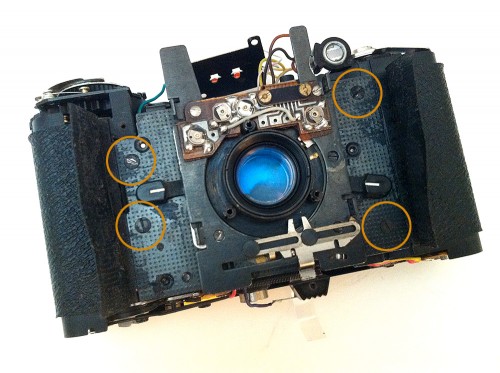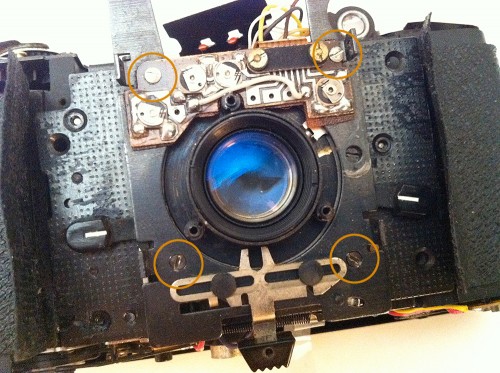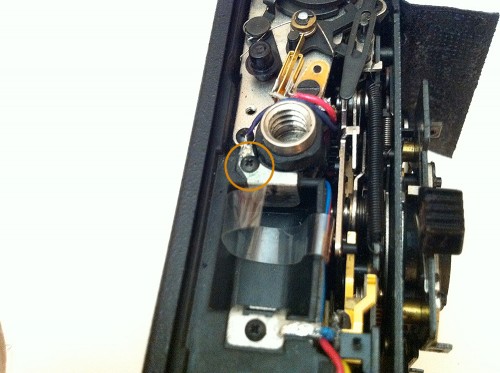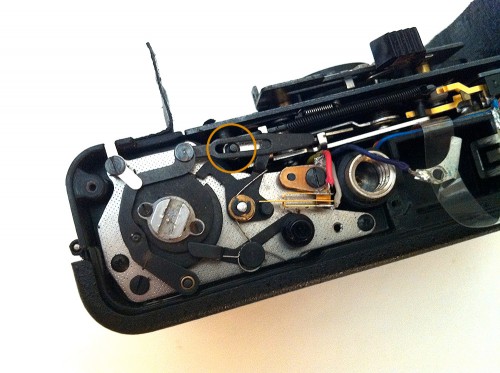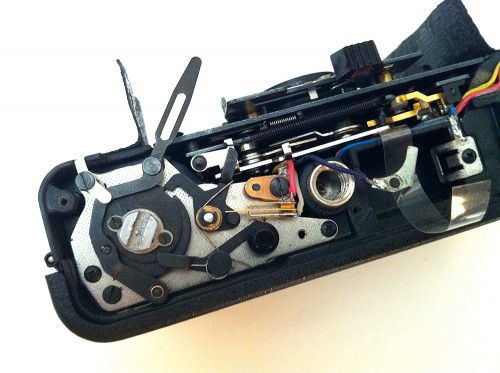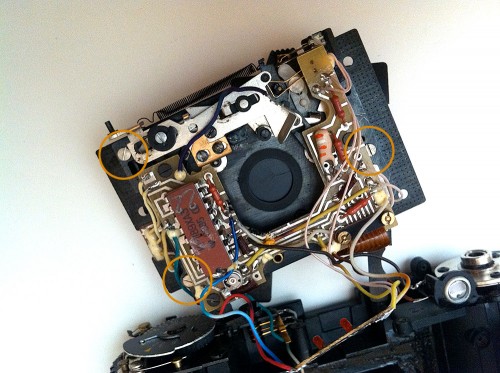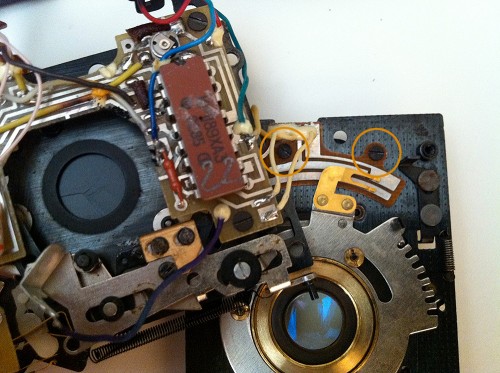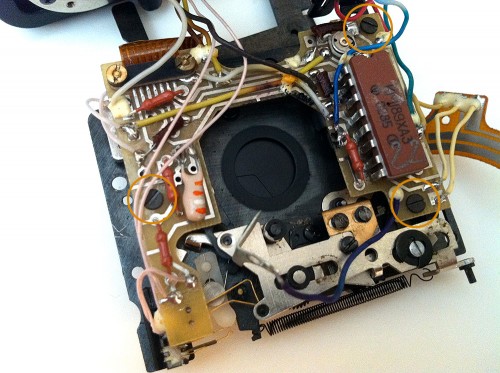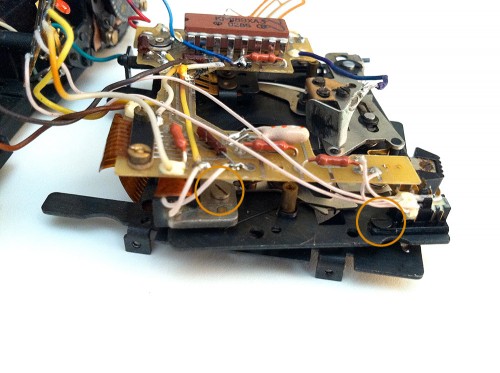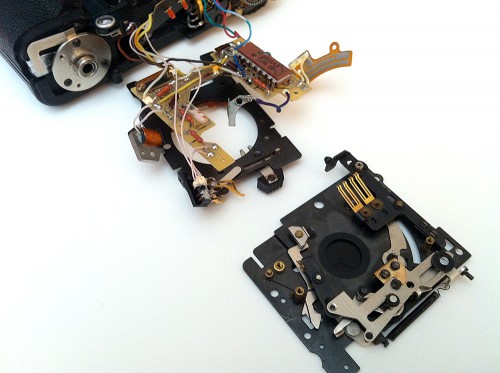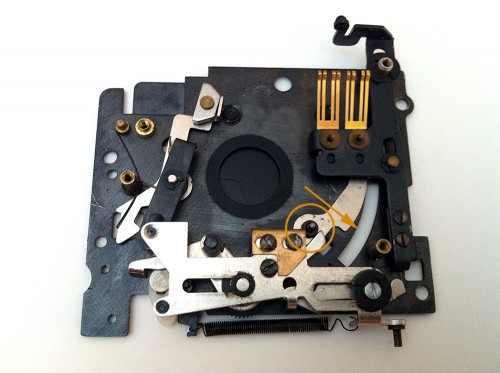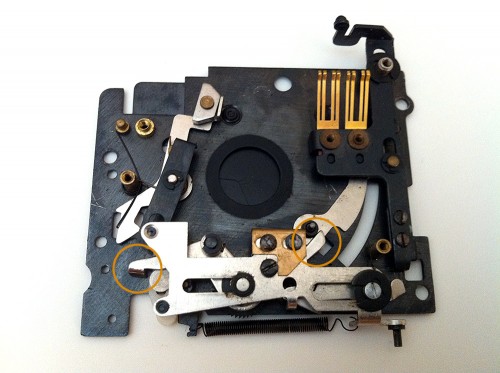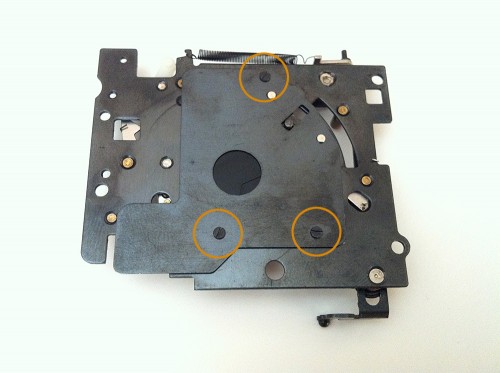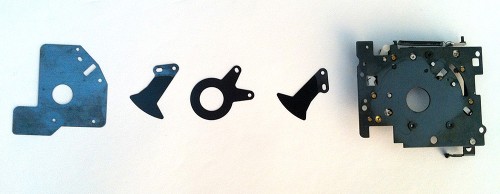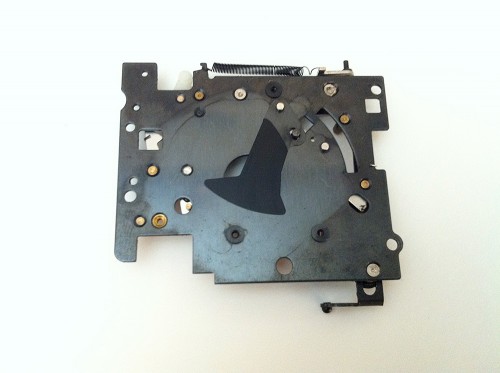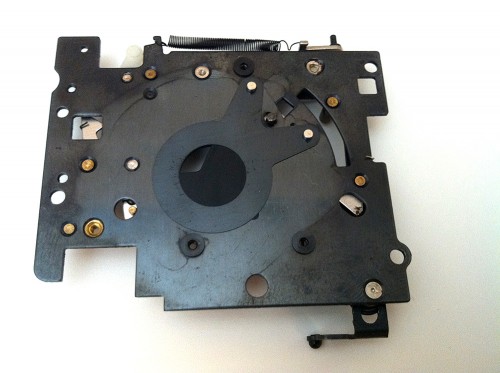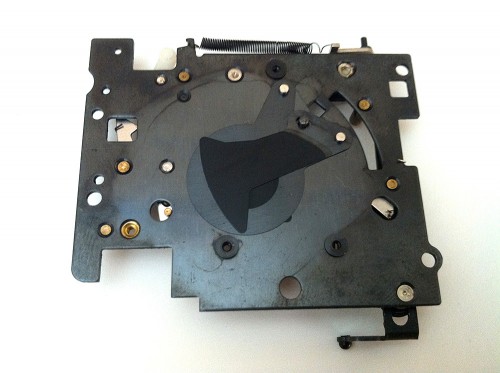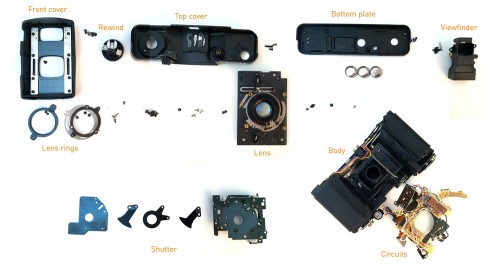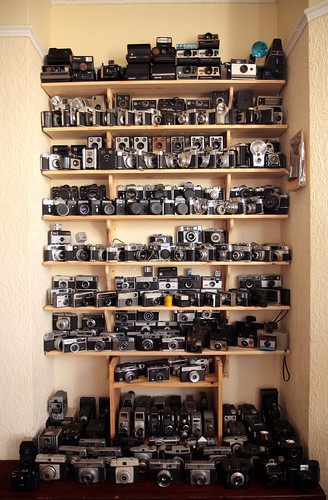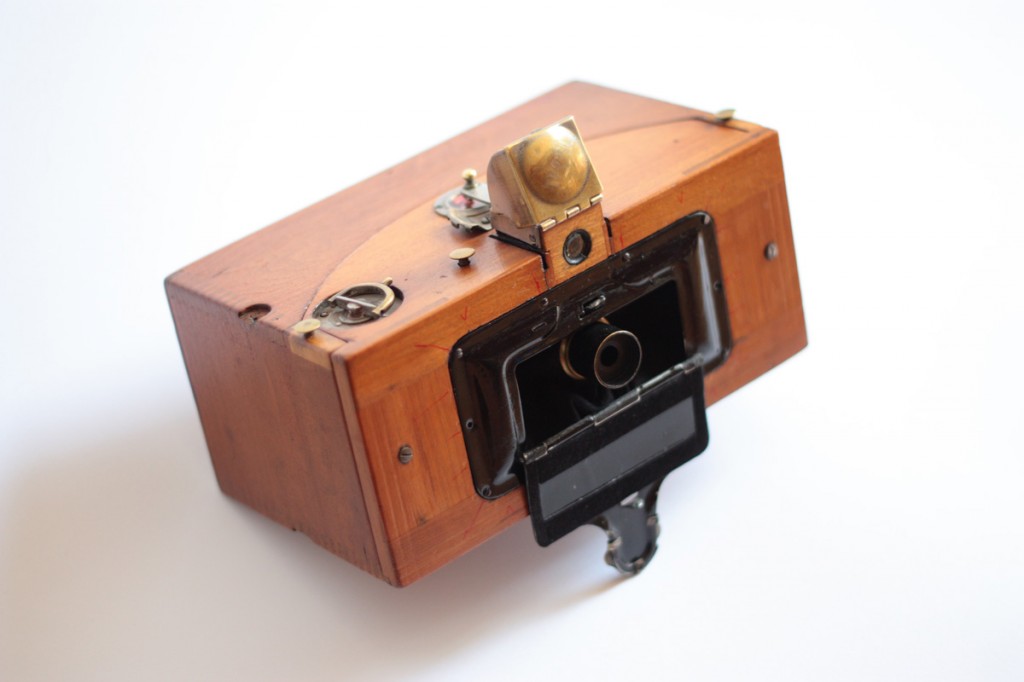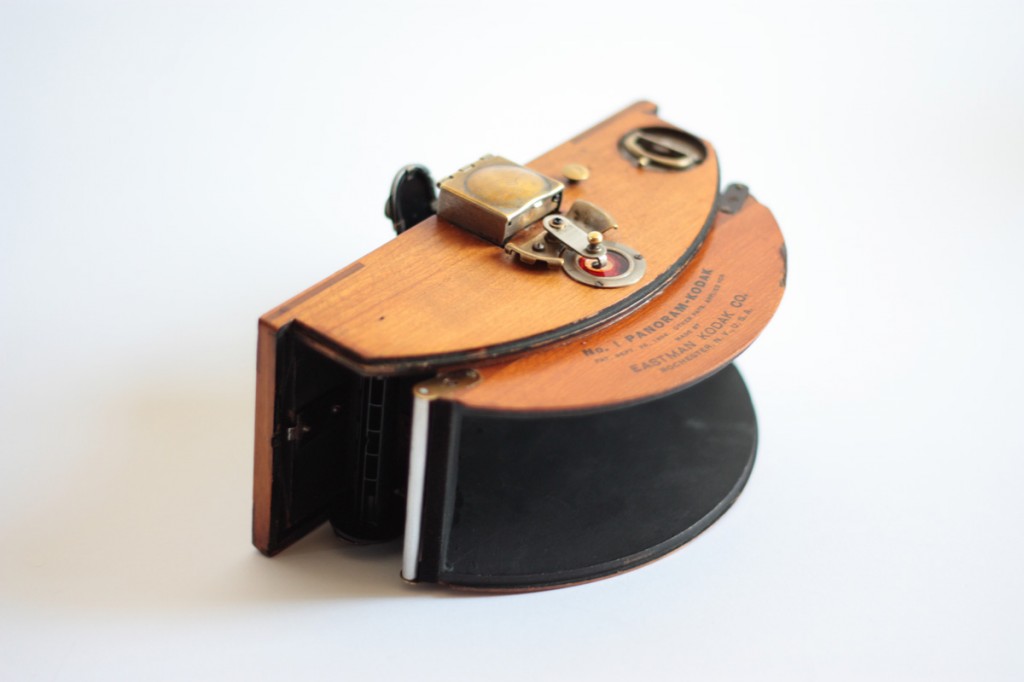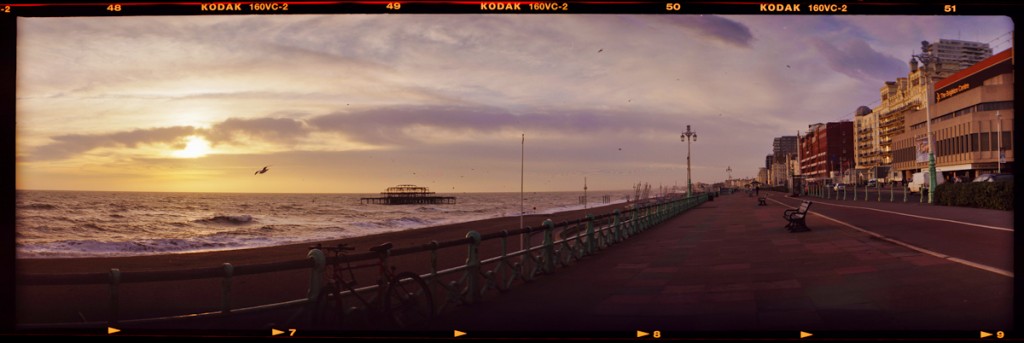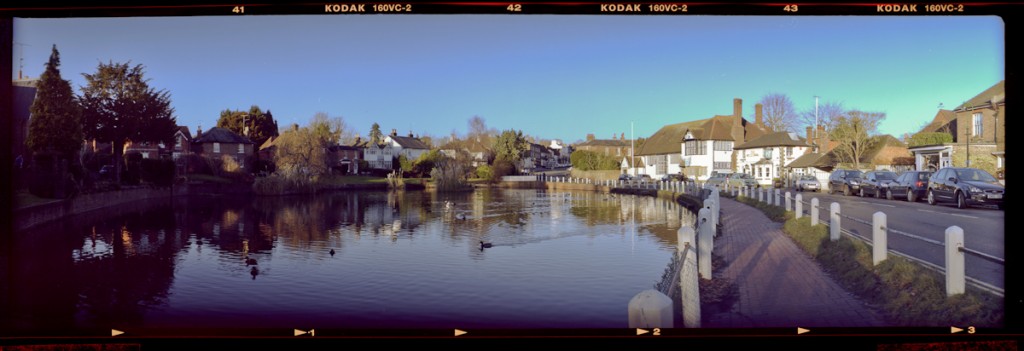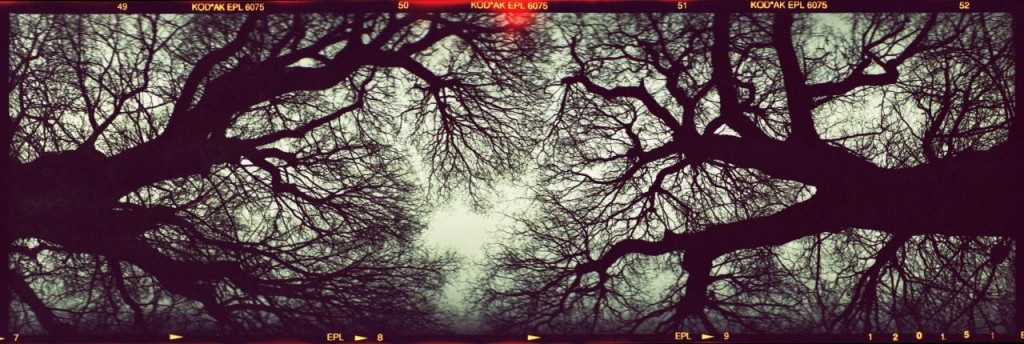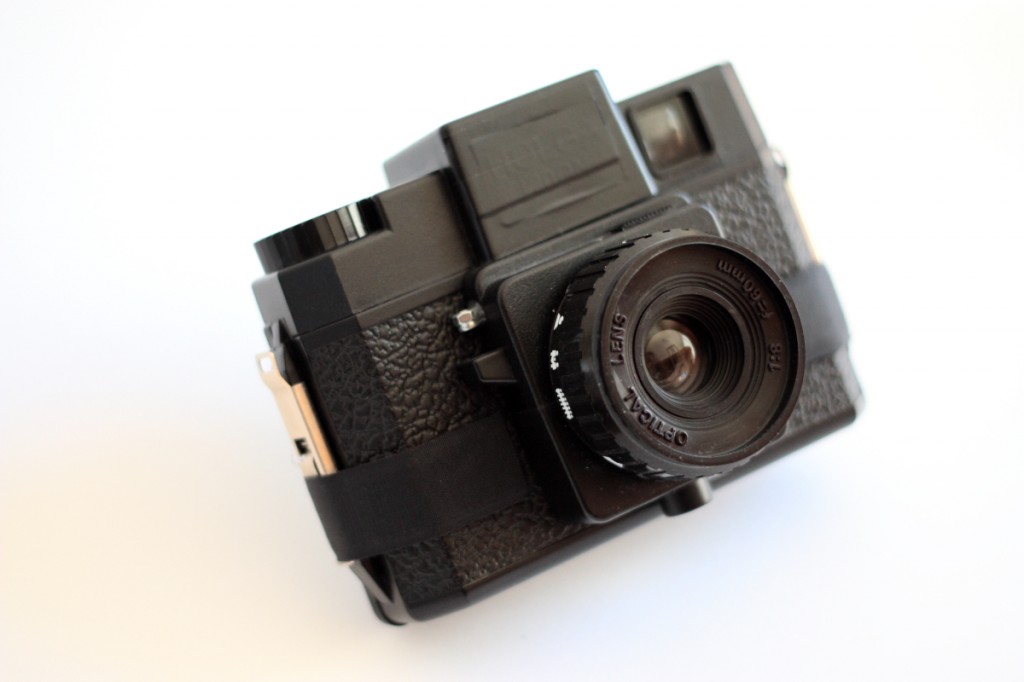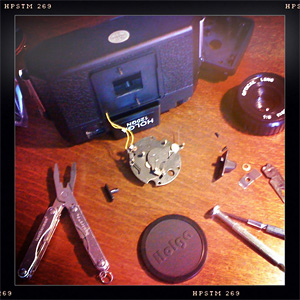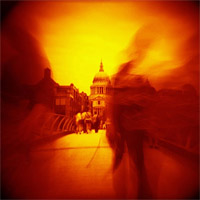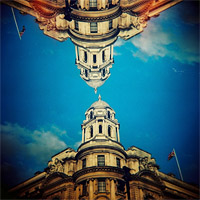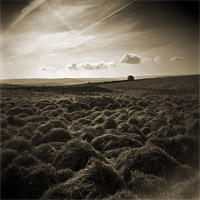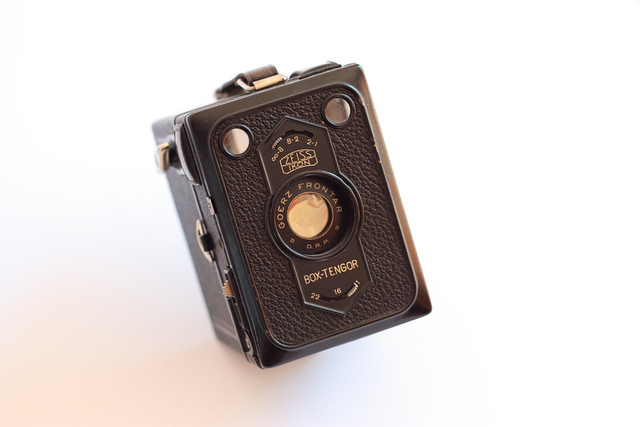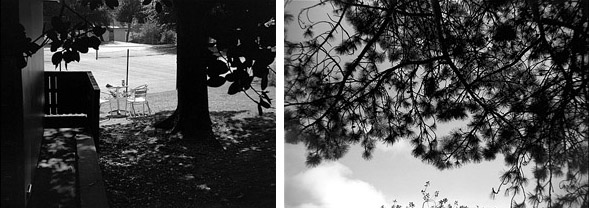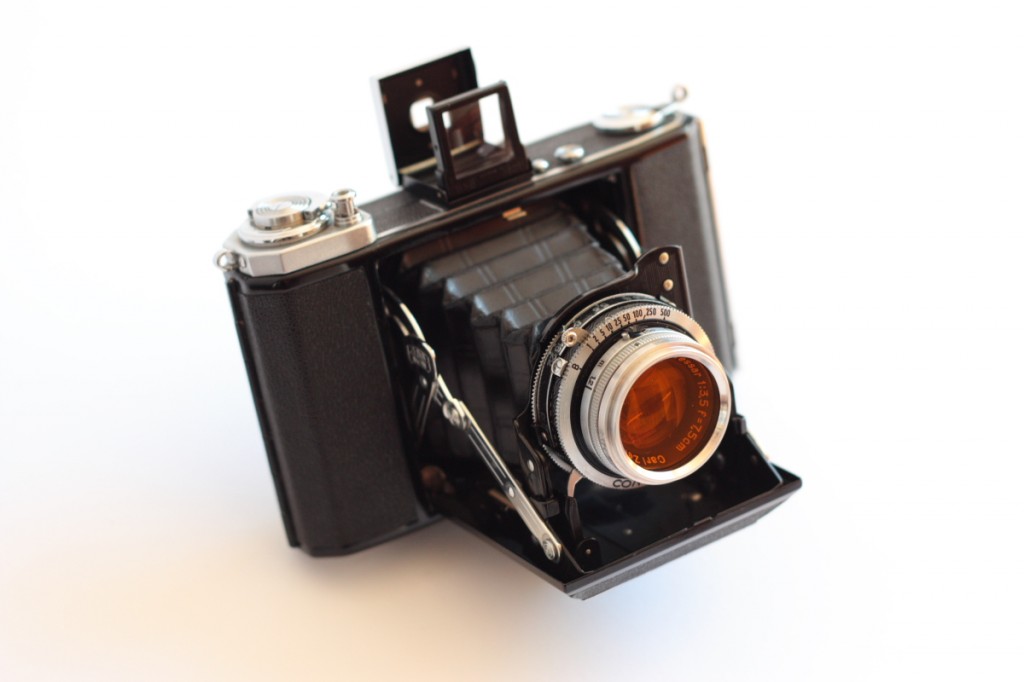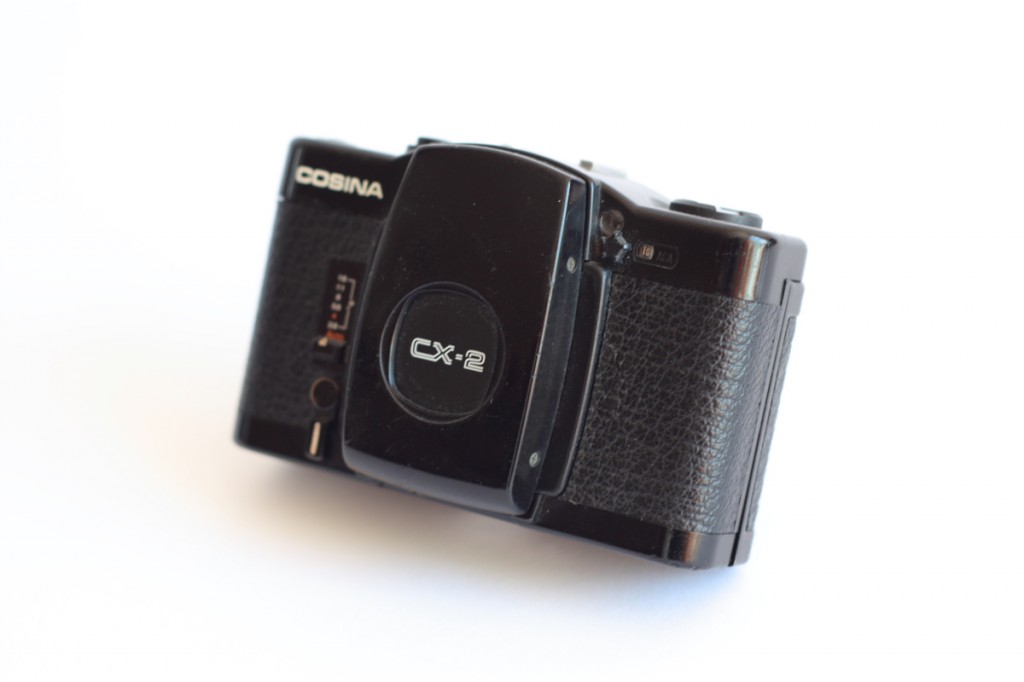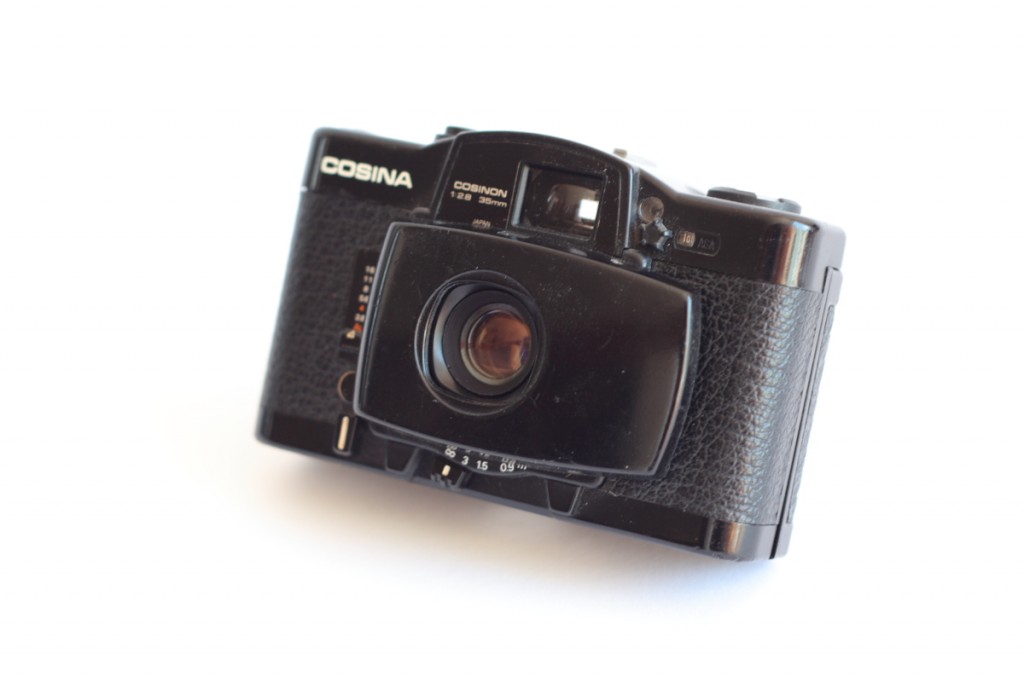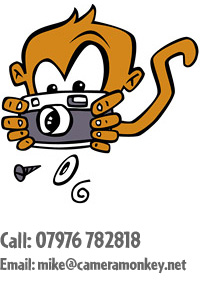I was fixing up this Zenit LC-A with a sticky shutter, and I thought I would do a step-by-step photo walkthrough of how to take it completely apart and clean out the shutter blades.
This little beast came to me looking fine, in good external condition, no rust, clean battery compartment, no knocks, all the lights worked and it made a fine clicking sound when you pressed the shutter button, but the shutter just didn’t want to open. And that’s not so good for your photographs…
With this problem, it is often a gummed up shutter mechanism. Usually the light seal between the shutter and the body, right in the centre of the camera, starts falling apart and gunk gets into those delicate little blades. Gunk that stops them moving.
It’s not too hard to fix – you need a few tools and nimble fingers as some bits are fiddly and there are some tiny wires I would not want to have to solder back on – but it is straightforward.
Before we start I’ll just show you where we are headed and say that I always lay out the pieces in the order I took them off, which makes putting it back together a breeze. And I take photos whenever I get that feeling that the complexity I’m looking at needs a record – something I can look at later to check exactly where all the bits came from!
Step 1: Tools
There are only really a few tools needed to strip down a Lomo LC-A and you probably have most of them already.
For this I used a cross-head jewelers screwdriver, size 00, a couple of flat headed ones, size 4 and 5, some handy tweezers for positioning screws, a couple of cotton buds, a bamboo skewer with one end cut into a screwdriver blade shape and some iso propyl alcohol. If you don’t have the alcohol you could try some lighter fluid instead.
Step 2: Removing the top and bottom plate
The LC-A top and bottom plate are pretty easy pickings. First, we need to get the front cover off, which just involves undoing the four screws on the sides of it.
When the screws are out the front cover will just fall or lift off. When you are putting it back together, make sure you line up these slots with the rods in the cover – I usually set it to full open or full closed and then carefully drop the cover back into position.
Now lets look at the top plate. This is the trickiest of the three as it has the rewind lever and five screws, one of which is under the front leatherette. Let’s do the worst bit first and find the front screw.
You will need your bamboo stick cut to a ‘blade’ or screwdriver head. I use this rather than a screwdriver because whenever you can you should use tools that have little or no chance of damaging the cameras.
Insert it under the edge of the leatherette and ease it away from the body. Unless someone has used the wrong glue to hold it down, it should tease away from the body revealing a screw.
Right, now we need to go round the back. We will do the rewind lever first. Open the back and insert a screwdriver between the two tines that usually engage with the film cannister. This will hold the rewind shaft still. Then simply unscrew the whole of the rewind lever top – the black plastic disc. It comes off anti-clockwise as you would expect. Take out the shaft and top and set them aside. Underneath you will find two shiny silver screws. Undo all the four screws at the back and the top cover will lift off.
One thing to look out for here is the shutter button. It will likely fall out of the top. There is a black plastic sleeve and an internal metal-block-and-brass-screw – both loose. The simplest thing is to turn the camera upside down before you take off the top and then they just stay sitting in the top cover. Remember when you come to reassemble the LC-A that it is easier to put the top on with the camera upside down too!
Another thing to look out for when re-assembling is the frame counter arm which pops out when the top comes off and must be tucked back into the top cover as you slide it back on. As ever, do not force anything. If you force it, you will bust it.
All down hill now, just three screws to remove the bottom plate. The longer one goes in the middle when you are putting it back together. Also note the back needs to be open for the bottom plate to come free. And look out for the little back foam pad which is what puts pressure on the sliding battery cover door.
Note that when you are reassembling, place the black foam pad in the camera against the edge there, then put the bottom plate on with the battery door in the open position. It all goes together very easily then.
So that’s the outer plates. Time to dig into the innards of the LC-A…
Step 3: Separating the lens/shutter from the body
First remove the top rings from the front of the LC-A lens assembly. There are two screws to undo and then you can take off the first black plastic ring.
Underneath are three more screws that release the two metal rings.
Then it should look like this:
Now we need to remove the viewfinder. This is held on by three screws, but there is a circuit also attached to the top, so that needs to come off first. Undo the two screws holding down the circuit board.
The circuit board will now be mobile enough for you to be able to ease it carefully out of the way and get to those screws holding the viewfinder in. Be gentle and cautious when moving the circuitboard so that you do not to pull off any wires. If you do, they will need to be very carefully soldered back.
Once the three screws are out, the viewfinder can be removed by bringing it forward and out. There is a lever underneath that connects from the lens to the needle in the viewfinder telling you which zone the lens is focused at. Be careful to ease the viewfinder and its lever out. Removing the viewfinder also releases a smooth connecting rod which lives in a brass sleeve. If you hear a little clattering sound then it may have fallen out into the mechanism. Just shake it out. Otherwise remove it and place with the viewfinder.
Now we are able to take apart the main shutter and lens assembly. This is held to the body by some more screws under the leatherette, so we need to peel back much more material to get to them. Again, use the bamboo stick and wiggle it in between the body and the leatherette until it is loose. You can use it to pull the leatherette out from under the flash and focus levers.
Once this is peeled back on either side, you can get to the four retaining screws on the assembly and the four on the front part of the assesmbly. Undo them all and we are nearly ready to take the LC-A apart. Don’t pull it off yet though, there are a couple more operations before it comes off.
The assembly is loose, but there are two small bits at the bottom of the camera that we need to look at in order to take it apart. The negative battery connector must be unscrewed so it is loose and the cocking arm must be moved off the little peg that it pulls back. After that, the whole assembly can be lifted up and over the top of the body where it is still connected.
Again, be gentle with moving the parts around. There are a lot of lightweight wires so don’t pull at anything, just ease it up so it is over the camera body.
Step 4: Extracting the shutter
Now we have the lens and shutter assembly off the camera, there are two more steps to getting to the shutter. First we remove the lens part, then the circuitry.
The lens part is attached by a set of screws and by a curved contact. First undo the screws.
With these screws undone, you can carefully separate the two parts. You will find there is still a connection where wires connect to a curved contact. Gently swing the lens part around until the contact and its two screws are revealed. Then you can undo them and take the lens piece away completely.
Note that I have turned the camera body upside down to bring the assembly close to me and so that it is up the right way.
With the lens part out of the way, we can take off the circuitry. Again this is a two step process of loosening the board and then releasing two smaller connections. We start by taking out the screws holding the circuit board on.
You will see that there is still a connection to the electromagnet at the top and the metal switching strips at the bottom. Once the main screws are undone you can move the circuit enough to gain access to the two screws holding these parts on.
Note particularly the position of the metal switching strips (above) so that you are able to put these back properly. Also it is much easier to remove these if the shutter is cocked, or at least moved towards the cocked position (as shown above) as otherwise they are covered and trapped by the large metal plate at the bottom.
Once the switching strips and electromagnet are free the shutter part can be removed all by itself so we can get to the blades to clean them. Here we can see the shutter free at last!
Step 5: Checking and cleaning the shutter
Check the shutter to see if it is moving freely. When the part shown moves in the direction of the arrow, the shutter blades should move apart.
You should not have to push this, it should open on its own as it is sprung. But often the blades and sometimes the arm get dirty and stop moving so easily. To test the movement, make sure the shutter is not cocked by releasing the catch at the bottom if necessary, then move the part shown on the left to allow the shutter to open. Any stiffness means this needs cleaning out.
To clean out the shutter flip the shutter over and undo the three screws. This will give you access to the shutter blades. Be careful when lifting off these pieces as they are quite delicate.
These pieces have to be completely clean to move smoothly. Do not oil them, this will not work. I take the pieces out and then use cotton buds soaked in iso propyl alcohol to clean the plate, then each piece as I put it back, both sides. I don’t touch them with my fingers as this could leave some oil on the blades – I use the tweezers to put them back in place. make sure there are no little bits of fluff from the cotton buds either.
Put back the plate with the three screws and check the shutter works smoothly as above.
Then reassemble the whole camera working in reverse.
Be careful with the metal switching strips – they are fiddly and you don’t want to bend them.
Also do not force the whole lens/shutter assembly back onto the body. Firstly there are lots of wires in there and you should gently ensure that they are all out of the way. Secondly check that the shutter release is underneath the two metal strips next to the frame counter and not bumping into them. Also check it is not fouling on the cocking arm bit on the bottom. Sometimes it takes a while before it sits happily and you can screw it back on but again it is not worth rushing or forcing it.
Full layout
This is the layout I ended up with. It is made from a couple of images so forgive the joins and slight changes in size. I thought it might be useful if your cat jumps on your pieces or you have a sneezing fit or something!
Let me know how you get on!

